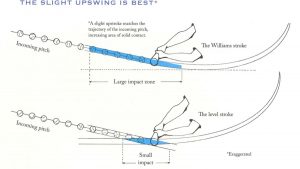Buster Olney, Senior Writer, ESPN The Magazine
EDITOR'S NOTE: This article appeared in the August 8, 2004 issue of ESPN The Magazine.
Looking back:
Hitting coach Jeff Pentland would tell other major leaguers, You don't want what Barry has, meaning they weren't equipped for the challenge of greatness. Pentland, who was Bonds' hitting coach at Arizona State and a lifelong friend, was amazed at how well Bonds coped with his own success. In that kind of spotlight, the more you accomplish, the more that's expected of you, the more you have at stake. Even the smallest failures become
enormous. Almost anyone would shrivel from that kind of pressure, Pentland believed, once they
understood it. Bonds embraced it.
He was obsessed with correcting flaws. A couple of months into his major league career, Bonds phoned Pentland and explained that pitchers were jamming him with fastballs.
"What do I need to do?" Bonds asked. "Barry, you're the smartest player I ever had," Pentland responded. "You'll
figure it out."
In time, Bonds moved closer to the plate, shortened his stride – "Just be slow with your feet," he once explained –and became the best hitter of inside fastballs Pentland had ever seen. And the best breaking-ball hitter. And the most disciplined, period.
Swinging a bat is the most basic instinct for ballplayers. They've been doing it since they were toddlers, and after years upon years of backyard games and BP and organized competition, the yearning to swing the bat is ingrained. A player walks past a new box of bats, and invariably he reaches in and pulls one out, hefts it, takes a
half-swing, checks out how it feels. It's a blind date with wood, and the ballplayer is looking to hook up. It's what they do. It's who they are.
So other players watched Bonds abstain, refuse to swing at anything out of the strike zone, and they were awestruck. He drew fewer than 100 walks in each of his first five seasons, but late in his
career, he was spitting at outside pitches. Bonds wouldn't see a strike for four or five at-bats – hell, for two or three days – and yet, when a pitcher tried enticing him with a fastball just off the
corner, he held back. He had the most potent swing in the game, more reason to swing than any of his peers, and yet he had conquered that most basic instinct. He was the pope of plate discipline.
....
You had to see him every day to understand. Everybody has bad days in BP. Bonds never did, carving line drives to left when he wanted, always smashing the ball squarely with his bat, forever precise, his concentration unrivaled. "The great players are able to slow the game down," said A's pitcher Tim Hudson, who allowed six hits in Bonds' first 14 career at-bats against him, including two homers. "He's been able to slow it down a little more than most. He's like the big kid in elementary school who was way better than everybody else."
Virtually all hitters identify pitches by the rotation of the ball after it leaves the pitcher's hand. If they see spin, the ball's face turned into a whirlpool of seams, they know the pitcher has thrown a curve or a slider. Otherwise, it's probably a fastball or a changeup. But Hall of Famer Tony Gwynn, who studied his rivals, maintained that Bonds could identify pitches before they were released. As a pitcher's hand reached its apex, Gwynn explained, Bonds could detect in an instant whether the pitcher held the ball with his palm and fingers straight up and down (a fastball), or if he gripped it from the side (a breaking ball). A flap of fingers sticking up from behind the ball meant changeup.
In practical terms, this meant Bonds had a huge advantage on other hitters, who had to wait until the ball was four or five feet into its journey toward the plate – an eternity, by comparison. "They always said it looked like he knew a breaking ball was coming," Gwynn said then. "Well, he did."
That wasn't exactly news to his teammate, pitcher Jason Schmidt. When Bonds hit his record 73 homers in 2001, Schmidt said, "They would throw him a breaking ball, and he was like a statue. He wouldn't even move. I've never seen anything like that. He knew it was a ball even before it left the guy's hand. He didn't offer. He didn't check-swing. You don't see hitters do that."
But by the time Bonds turned 40, Schmidt was used to seeing him do the impossible. Somebody broke out a deck of cards in spring training, and Bonds eyeballed the deck as it was shuffled, then predicted the identity of the bottom card. Four times in a row. You had to see it to understand.
Sam Holman lugged a bag of bats over to Bonds in the spring of 1999, bats made out of maple rather than ash. Bonds had heard about Holman and his bats from former teammate Joe Carter, and after Bonds launched homer after homer with the maple in BP, he sat with the former stagehand and asked precise questions about why the
bats seemed harder. Holman sent him a dozen bats a week. Bonds would phone
whenever he wanted to make tenth-of-an-ounce adjustments.
Bonds had asked for just such an
incrementally lighter alteration in the summer of 2001, when he was stalking Mark McGwire's single-season home run record of 70. Holman watched on TV as Bonds bounced a couple of long drives against outfield fences, and knew he'd be getting a call. Sure enough: "Dude, there's something wrong," Bonds said. He and Holman agreed to ratchet up the weight by one-tenth of an ounce, and Bonds blew McGwire away. "Barry and I both know," Holman said, "that the record could be 76 or 77. He did the work for that."
'via Blog this'







